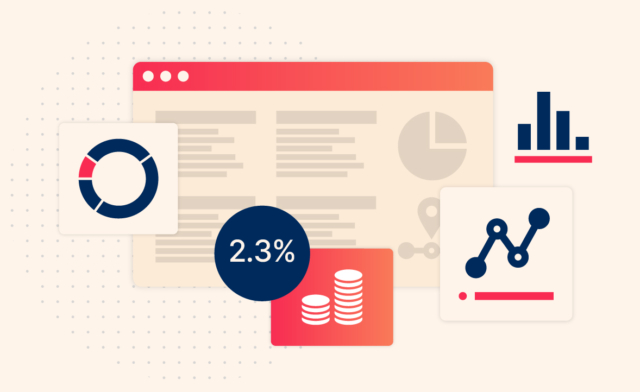The Undeniable Benefits, Tactics & Metrics of Data Driven Recruiting

In talent acquisition, many recruiting teams can get stuck in the rut of doing things the way they’ve always been done… because that’s just how you do them, right? WRONG! We’re ready to help you shake things up with a more data-driven recruiting. Culling data to inform your recruitment strategy has many benefits like improving Diversity Recruiting Initiatives, tapping into quality talent pools you didn’t even know existed, hiring top talent before your competitors do and of course driving revenue and profits through the ceiling!
So how do you actually get the data you need? Well, with the right software of course. But to get you on your way and thinking more about data driven recruiting, we’ve pulled together tactics you can put into practice along with metrics to begin tracking.
First, take a look at the benefits to get your mind thinking strategically. Then, go over the tactics and metrics we’ve included below to get your team going!
- Data Driven Recruiting Benefit: Tackles Talent Scarcity
Data driven recruiting strategies provide the insight needed to cast a wider net to ultimately build a larger pipeline. When talent is scarce for a specific industry or role, it’s often a mirage. The talent is there, but finding them can be so challenging that it creates the illusion of Talent Scarcity.
- Data Driven Recruiting Benefit: Improves Diversity Hiring
Data has the power to identify under-tapped Applicant Pools you might have not been able to discover manually. It also helps identify and quantify historic or unconscious bias to reduce it in future decision-making.
- Data Driven Recruiting Benefit: Competitive Advantage
Data helps recruiting teams make more strategic decisions so they can gain an edge on their competition. Predictive Talent Acquisition Analytics can help recruiting teams zero in on top talent faster and give the insight needed to engage quality candidates and remove unqualified or unfit talent out of the system.
With competition being so fierce for quality talent, intelligent recruiting systems are a must to meet business objectives while saving on recruiting costs. Keep in mind, it’s not just about getting the right people, but getting the right people within the recruiting budget.
- Data Driven Recruiting Benefit: Drives Business Profit & Revenue
Ultimately, data driven recruitment improves hiring results, employee retention, business performance, revenue, profit and more. It’s a cycle of success, all thanks to data.
Data Driven Recruiting Tactics
Set up processes for consistent data input
One of the biggest ways data can be skewed is inputting it into your system wrong. Whether you’re using recruiting software or not, multiple people may have different ways of going about inputting data.
To Do: Conduct an audit of everyone on your team and figure out how current systems and processes are being used and integrated. Gather feedback from each and then decide on a specific data aggregation method for everyone to abide by. This will ensure all actions in the recruiting process are being logged consistently, so your data is as accurate as possible.
Build a scoring system
In marketing, potential customers are assigned scores based on their interactions with the business. Customer relationship management systems give marketers the ability to allot points to customers for specific actions they take. For instance, opening and clicking through emails, following the company on social media or even filling up their shopping carts and making purchases. All of this information is stored in the system under each customer’s profile, and the exact same can be replicated for candidate tracking.
To Do: Set up a scoring system to identify candidates most engaged with your career site, social handles, regular site and more! Assign points according to the action. For more serious actions, like opening your emails or clicking through to open job ads you would allot more points. Then set parameters in a customised Recruiting Metrics Dashboard to segment out which candidates are most engaged in your overall Employer Brand and recruiting process.
Did you know Oleeo uses a Predictive Recruiting Scoring algorithm to score all candidates and identify the top candidates to engage? Want to see how it works? Sign Up For A Demo With One Of Our Experts!
Set up a structured interview process
Another great tactic for building a data driven recruiting strategy is to set up structured, consistent and measurable interviews. This will help you with the previous tactic of candidate scoring but will also help you tie this data to the performance of the employee once they’re hired.
To Do: Once you’ve set up a structured interview process (consistent set of questions, metrics and rating scale that are used in every interview), you can look back at your high performing employees interview responses so you can build out benchmarks for making future hiring decisions. You’ll start to notice patterns amongst your top performers, and they most likely exhibited they would be a top performer from the get go. So get to digging!
Data Driven Recruiting Metrics
Candidate to Employee Conversion Rates
With so many channels that candidates come from, you need to be tracking which channels bring in the most conversions. Many make the mistake of focusing efforts on the channels that appear to bring in the most applicants, but not the ones that result in the most hires. For example, social channels may be driving in 500 applications a day, but if the conversion from candidate to employee is low, then spend can be decreased or reallocated to a higher performing channel.
Candidate Pipeline Speed
From the time a candidate first interacts with your brand to the moment they become a new hire, there are many stages that need to be tracked.
- # Sourced Candidates to # of Applicants Ratio
- # of Applicants Ration to # of Candidates Screened
- # Candidates Screened to # of Candidates Interviewed
- # of Candidates Interviewed to # of Candidates Who Made it to the Second Round Interview (and so on)
- # of Candidates from Interviews to # of Offers
- # of Offers to # of Acceptances
- # of Acceptances to # of New Employees in Onboarding
Identify slow moving funnels and gather feedback from your internal team and candidates to find solutions for making those stages faster.
Hiring Stage Conversion Rates
This is similar to the previous metric, but has to do more with completions throughout each stage instead of time. Again, you’ll track the same stages:
- # Sourced Candidates to # of Applicants Ratio
- # of Applicants Ration to # of Candidates Screened
- # Candidates Screened to # of Candidates Interviewed
- # of Candidates Interviewed to # of Candidates Who Made it to the Second Round Interview (and so on)
- # of Candidates from Interviews to # of Offers
- # of Offers to # of Acceptances
- # of Acceptances to # of New Employees in Onboarding
However, you’ll be able to track things like candidate drop off rates. For example, if your offer to acceptance conversion rate is extremely low, you’re probably wondering why you’re losing so many candidates near the end of the cycle? You can look back at your times to see if the interview to offer funnel is more lengthy, which could be giving the candidate more time to interview other places and make a decision to go elsewhere. But if that stage of the funnel is extremely short, you can likely rule out that time isn’t a factor and it could be something within your actual offer.
Recruiting solutions that combine predictive analytics, data capture, analysis and robust reporting can help you streamline Data Driven Recruitment. Oleeo’s Intelligent Talent Acquisition Suite is worth a look!



